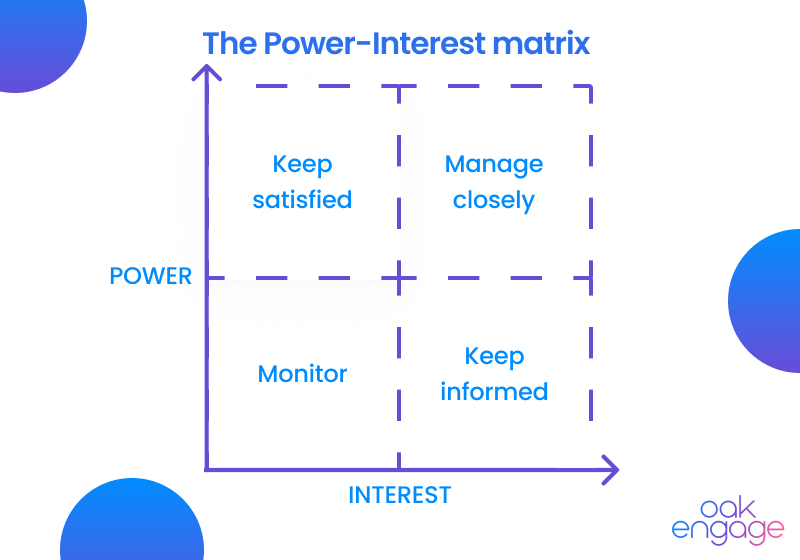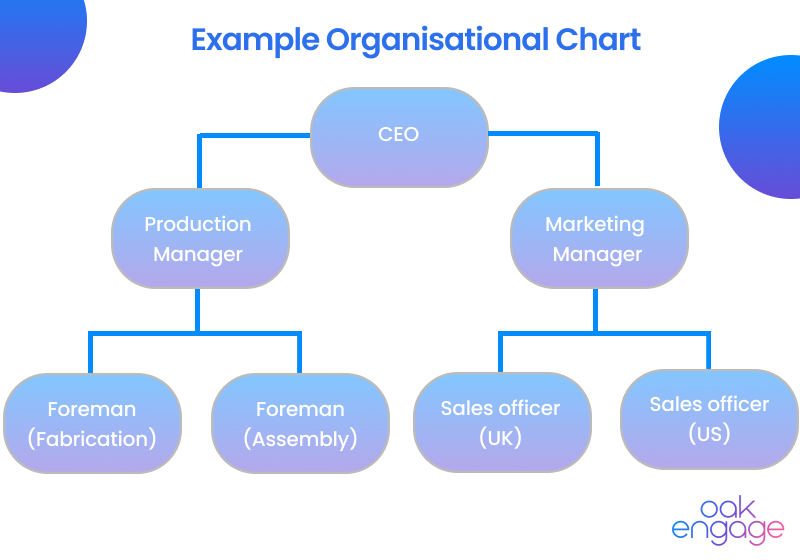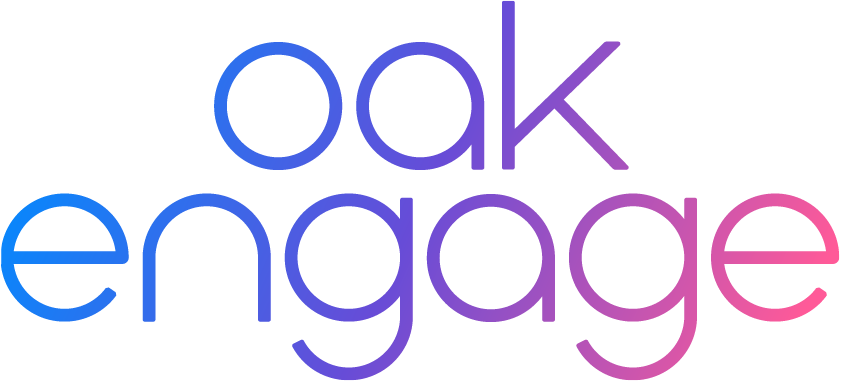You know the value of employee engagement, connectivity and effective communications, but is your leadership team aware of the impact it can have on business success?
When it comes to laying the groundwork for an engaging employee experience, it’s critical that your key decision-makers have clarity on your organisational goals and how implementing a modern intranet or employee app can transform employee engagement and help the company thrive. Building a robust intranet business case will ensure you can answer all the questions your leadership team may raise when you’re preparing to justify intranet investment.
Being able to demonstrate the positive correlation between a strong digital employee experience and achieving your business objectives will create a more transparent and connected vision for your leaders.
In this blog we’ll cover:
- What is a business case?
- Preparation: Making your business case
- Assess your existing employee platform
- Establish your opportunity
- Intranet requirements
- How will you measure success?
- Prioritise your objectives
- Expected business impact
- Intranet marketplace
- Your intranet business case template [FREE DOWNLOAD]
What is an intranet business case?
A business case was traditionally used to justify the cost and resource requirements of a project. Now, it’s one of the most powerful tools at your disposal when it comes to re-designing, investing in, or building an intranet. When you can demonstrate a strong intranet cost benefit analysis, you’ll have the attention of your leadership team.
When produced and delivered effectively, a business case will:
- Define the opportunity and business need
- Set out the value and ROI of an intranet
- Outline the scope, including resources, timeline and costs
- Evaluate options and make a recommendation
- Ensure you gather the support to deliver on the project
Your intranet business case can make or break your intranet project, so it’s crucial to get it right the first time and make it strong.

Preparation: Making your intranet business case
The process of compiling an intranet business case can sometimes seem a little daunting. We’re here to outline the key steps to help you build an efficient intranet value proposition.
Identify your stakeholders
Start by understanding your stakeholders. From Board members to Directors, Partners, Executive team and so on, however your business is structured and whatever titles your leaders have, you should know who the key decision-makers are.
Next, determine the level of power they have in decision-making by creating a simple stakeholder map. Assign each stakeholder group a power level in the grid to visualise which group or individuals you should speak to first.

Segment your key stakeholders and identify what is important to them. Which tools or elements of an intranet could be used to address their concerns or responsibilities as leaders? Let’s look at a few examples.
Executives and leadership team
Being able to justify intranet investment against real business outcomes will capture the attention of your senior stakeholders. Consider how a unified platform can streamline business processes and employee communications so that people see what’s important to them and pay attention to company updates. Ultimately, the financial commitment and ROI will be important to them, so highlighting the cost benefits of an engaged workforce on productivity, employee advocacy and increased tenure will pique their interest.
IT teams
Intranet security and compliance will be the priority for your IT teams. When you have clarity on security requirements and scope for integration with other systems, you can ensure that all shortlisted platforms will adhere to these requirements. Begin by addressing the overall security of the intranet platform that you’re proposing and discuss where it will be hosted, any potential integrations and whether it requires internal IT resources to build. For peace of mind for your IT teams, share our Robust Intranet Security guide with them.
Internal communications teams
It’s common for internal comms teams to be spinning many plates at once, often in a small team with many responsibilities, so making their jobs easier will be key. How do you do that? Well, intelligent AI intranet tools can certainly help to support content creation and delivery to ensure the right messages reach the right people. Bringing tools and processes into one central hub to share important company news, events and employee information will streamline their workload. In the back end, an intuitive and simple admin experience that doesn’t require much training means they can get on with things right away.
Human Resources
HR is most interested in the happiness of employees, their safety, retention and bringing new staff on board. Housing all policies within one platform, providing a safe space for HR related requests and effective management of onboarding will be of the highest importance to your HR colleagues. Definitely focus on the impact that a modern intranet can have on employee onboarding, employee retention and overall company culture.
End users: Your colleagues
Remember, you’re doing it for them, so keep them engaged from the start and gather feedback throughout. They will be using the platform day in, day out, so if you don't address their concerns or pain points from the start, you risk low adoption. Ultimately, their usage and engagement with the platform will be the biggest success factor. They’ll be looking for a solution that:
- Is easy and fun to use
- Makes finding information quick and easy
- Enables them to communicate with other employees in different departments
- Enables them to share their own content
- Empowers better cross-team collaboration and connection
How will you deliver your intranet business case?
A written plan that sets out your evidence will massively help when communicating your message with stakeholders.
Requirements & Timing
You should always speak to stakeholders and decision-makers to identify any potential restrictions or challenges before beginning your intranet project plan. For example, some industries will have increased levels of compliance or restrictions when it comes to storing sensitive company or employee information digitally. Access and permissions to view certain information and areas within the platform could be a key consideration to keep information managers happy.
Creating a timeline for your project will help your decision-makers visualise the plan and understand how realistic it is. Plus, they will be able to understand budget allocation for financial planning over the project period.
Assess your existing platform
Look at your current internal communications tools and identify areas for improvement, carefully considering end-user needs.
Pinpoint what you like about your existing platform(s), what works well for your people and any pain points or restrictions with current tools.
Common challenges faced by employees day-to-day can include:
- Technical issues relating to search glitches, login issues or errors when uploading content
- Engagement issues such as a lack of opportunity to connect and collaborate, declining usage or low employee engagement
- Usability issues around complex systems, poor information access or outdated resources
- Productivity concerns like inefficient processes or third-party tools that cannot demonstrate a positive ROI
Establish your opportunity
Now it’s time to consider which business needs are not currently being met and how an intranet could solve them.
Outline the specific comms, engagement and productivity challenges within your company that an intranet could contribute to improving.
Once you have the full picture, you will have your wishlist of requirements for new intranet software or employee app. Feed these insights into your intranet business case with specific features and functionalities that are non-negotiables and nice-to-haves.
Set your general objectives and key results
General objectives are usually high-level and may be difficult to quantify.
Start by speaking with department heads to understand the current challenges faced at different corners of the business and how an intranet could help to address them.
General objectives could include:
-
Improve connectivity and communication
-
Increase collaboration
-
Increase employee retention
-
Make knowledge sharing easier
-
Increase employee engagement
Set your specific objectives
Specific objectives are often of value such as a financial value or percentage and may include, for example:
-
Enhance knowledge sharing by 60% within 12 months
-
Increase business growth by 15% within 12 months
-
Increase revenue by £20,000 within 8 months
-
Increase employee retention by 70% over a 12 month period
-
Increase employee engagement by 30% within 3 months of launch
Identify pain points and benefits
To identify stakeholder and employee challenges and pain points, you need to be asking colleagues at all levels across the company for their honest feedback. Collecting insights from employee surveys and following up with focus groups or meetings will provide the context you need to identify the benefits and pain points.
Start with an organisational chart like this one and list the individuals and departments you’ll need to reach out to for input.

Once you’ve gathered stakeholder and employee feedback, break down objectives by department and consider how an intranet will benefit each one. For example:
|
Department |
Example department objective |
Intranet approach to achieve objective |
|
Sales & Marketing |
Speed up access to company information |
Advanced search and integrations |
|
HR |
Faster, personalised onboarding and training |
Up to date company information and knowledge base, personalised onboarding processes |
|
Admin |
Reduce email traffic |
Streamlined, smart content delivery |
|
Executive team |
Keep employees informed on company news and objectives |
Timeline and news features for all company information to be accessed in one place |
Intranet requirements
The requirements for the ideal intranet will vary depending on who you ask across the company, but they can usually be categorised into the following groups:
- Technical performance and security capabilities
- Ease of use and clear information structure
- Productivity and streamlining tasks
- Communication and collaboration
Once you’ve identified the digital workplace requirements, showcase how an intranet can improve each of these focus areas and establish success criteria.
Time spent identifying goals and requirements is time saved when it comes to stakeholder management later in the project.
How will you measure success?
Ensure that you’re taking the right approach and using the correct metrics before you begin calculating the return and value to your business. Find out which metrics and success measures your stakeholders are familiar with so you can report in a way that makes sense to them.
These may include:
- ROI of intranet implementation
- Cost benefit analysis
- Total cost of ownership
- Internal rate of return
- Employee retention and turnover
Prioritise your objectives
Consider which objectives and key results your stakeholders are likely to consider the most important. Use data and insights from focus groups, pulse surveys or discussions with key stakeholders to prioritise four or five key objectives.
Typically, the drive to pursue a new intranet or employee platform can be categorised into one of four main objectives.
Workplace culture and employee engagement
A recent Gallup report revealed that highly engaged employees achieve a 10% increase in customer metrics and a 23% increase in profitability. Essentially, a strong workplace culture and engaged workforce improves employee performance.
A modern intranet is a fantastic tool for combining professional and social spaces to enhance culture and engagement. Encouraging user-generated content across community hubs and social timelines can contribute to an improved workplace culture.
Collaboration
With flexible working arrangements and global teams working across different time zones, modern businesses need tools for collaboration and connection beyond face-to-face.
A modern intranet solves collaboration challenges by providing a central platform for employees and teams to connect and engage. Whether it’s through shared discussions on timelines or a permission-controlled space for a committee to discuss a new initiative, the right tool can bring people together and encourage them to have their say. It also helps organisations adapt to new ways of working, breaking down location barriers.
Knowledge management
When information isn’t easy to access, difficult to find or even outdated, it results in time lost due to poor platform navigation, decreased productivity and low employee engagement.
Features like a Knowledge Base within a modern intranet can provide employees with a wealth of information and support to get the most out of their platform. From FAQs to how-to guides and walk-through videos, Knowledge Base is ideal for new starters and remote workers.
Communication
A typical knowledge worker spends seven hours per week reading, sorting and replying to emails. This equates to 364 hours or 15 days per year.
By streamlining the time spent on admin and sifting through comms to identify what is or isn’t important, employees can reclaim more time to do their actual job. A platform that prioritises a personalised user experience can deliver comms directly to the relevant people, with built-in instant messenger to quickly reach out with questions. Information also becomes searchable and browsable, creating a knowledge base the entire business can benefit from.
Expected business impact
Once you’ve identified your objectives, it's important to determine the value of each one and how to measure return on investment.
If you’ve identified a broad objective with no value, here are five questions that can be used to strip away the layers until you find a measure to assign to it.
For each objective, ask yourself:
- How is it measured?
- What is the current metric value?
- What is the goal metric value?
- What is the value of the difference?
- What is the value over time?
Intranet marketplace
You’ve identified your stakeholders and established your opportunities, now it's time to present the options of suppliers to deliver your project.
Exploring the options
By the time you reach the point of developing an intranet business case, you’ve probably got one or two intranet providers in mind. This section will demonstrate to decision-makers that you have taken a detailed approach to researching all possible options and selected the best suited solution.
So, how do you identify the right intranet option for you?
You can quickly identify the big players using a Google search or you can be more specific in your search using detailed reports and product ratings such as the ClearBox Intranet Report. Specialist groups on LinkedIn or online communities with intranet professionals can also provide valuable anecdotal insights.
Analysing alternatives
Demonstrating how each of the shortlisted platforms will help to achieve your project objectives will be crucial to achieving buy-in to the best platform for your organisation.
Even if you know which option you will be putting forward to your decision-makers, it's best to be as transparent as possible. Your list of vendors will usually fall into three categories:
Functionality
- Consider the actual features and capabilities of the solution
- Compare the features from each provider and match them to your objectives
Intranet cost-benefit analysis
- Consider the investment in terms of direct and indirect cost, plus the anticipated returns
- Add any additional resources that fall outside the software itself (for example, launch and training activities)
The ‘it factor’
- To differentiate further, think about any additional considerations such as customer reviews, reputation, first impressions and attitudes of staff you have engaged with, similar customers and cultural match to name a few
📖 Recommended reading: Oak Engage vs Interact: Which platform is right for you?
Direct costs
Your direct costs will vary depending on the solution you select, but either way, you will need to consider both the upfront and future cost.
You will have the costs of the platform itself, including software, maintenance, integrations and development. Don’t forget implementation costs that will cover strategic planning, project management, design of your platform and external training.
You should not be tempted to cut back on the implementation costs. Evidence shows that 75% of business and IT executives anticipate their software projects will fail due to cutbacks, so getting it right the first time is key.
Indirect Costs
Your indirect costs will involve activities and resources that fall outside of the quoted direct cost from your chosen intranet vendor.
A successful intranet will often include launch activities which will have an additional cost that you will need to consider. These things are key to the initial and long-term success of your company intranet and should be considered in the part of your plan.
Indirect costs could include employee resource, initial launch, promotion and engagement activities, support costs and internal training for end users.
- Employee resources
- Management changes
- Launch and initial engagement activities
- Support costs
- Internal training for employees and leadership
Cost-benefit analysis
The next step you should take is to compare like-for-like costs for different intranet vendors. A cost comparison and analysis will provide a good side by side visualisation for your stakeholders and decision-makers.
Assessing risk
All strong business cases will consider any potential risks. Start by writing out your goals and then include a list of things that might put your objectives at risk.
It should look something like this:
“Our main goal is to acquire intranet software that improves employee engagement, centralises company information and increases business connectivity. It should take approximately [x] months to migrate previous documents and train all employees on the software. The project will require the help of [insert departments] and the potential risks include [identified risks]”
Present the potential risks in terms of how likely they are to occur and the impact that they could have on the project or business.
Demonstrating that you have considered and planned how to mitigate these risks is an important step to win over decision-makers and secure their buy-in.
There are two distinct types of risk:
- Implementation risk: Refers to the proposed investment (your chosen intranet software) that may change from the original plan
- Outcome risk: Refers to the needs of your organisation. Consider the scenario if they are not met. This will risk the outcome of the project
Presenting your chosen intranet solution
Delivering your intranet business case in a way that clearly showcases how it will align with the company goals and project objectives will be key in influencing your decision-makers.
Choosing the best company intranet can be a daunting process but with Oak Engage, you’re supported every step of the way. You'll receive expert insights, best practice tips and guidance from our team, right from the beginning. Oak Engage combines the intranet features that admins really value and employees love using, to create an innovative workspace solution to support the needs of your organisation.
If you choose to work with Oak Engage, you’ll have access to regular, free online webinars and strategy days to maximise your knowledge, inspire new ideas and hear how other customers get the most out of their platforms too.
Your intranet business case template
Now that you’re equipped with the know-how to build an intranet business case, it's your turn to collect all the research you’ve accumulated and present it to your stakeholders. To help bring your business case to life we’ve created a free template to create your own business case.




